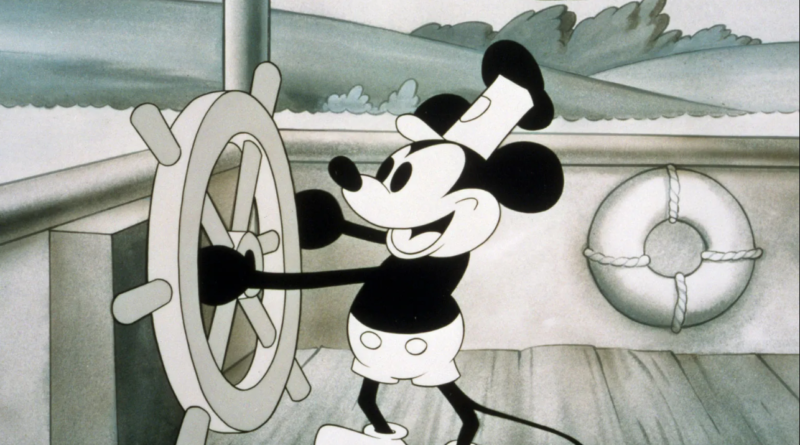Evolution of Cartoon Characters in Pop Culture
Cartoon characters have been a significant part of pop culture for over a century. From their early beginnings in the silent film era to their digital transformations today, these characters have evolved dramatically, reflecting societal changes, technological advancements, and shifts in audience preferences. This article goes deeper into the fascinating journey of cartoon characters and their enduring impact on pop culture.
Early Beginnings
The inception of cartoon characters dates back to the early 20th century. Winsor McCay’s “Gertie the Dinosaur” (1914) is often cited as one of the first animated characters, showcasing early animation techniques that captivated audiences. However, it was the creation of Mickey Mouse by Walt Disney in 1928 that marked a significant milestone. Mickey Mouse’s debut in “Steamboat Willie,” one of the first sound cartoons, revolutionized the industry and set the stage for future developments.
The Golden Age of Animation: 1930s to 1950s
The Golden Age of Animation, spanning the 1930s to the 1950s, saw the rise of many iconic characters. Disney introduced characters like Donald Duck, Goofy, and the timeless classics from “Snow White and the Seven Dwarfs” (1937). Warner Bros. followed with beloved characters such as Bugs Bunny, Daffy Duck, and Porky Pig. These characters were not just entertainment but also cultural icons, often reflecting and influencing societal norms and values. Craze Earth is a blog that covers traits of cartoons such as big lips cartoon characters, characters with glasses, and characters with big ears.
Technological Advancements
During this period, technological advancements played a crucial role in the evolution of cartoon characters. The introduction of Technicolor in the 1930s brought vibrant life to characters, enhancing their appeal. The development of synchronized sound also allowed for more dynamic and expressive characters, creating a deeper connection with audiences.
The Television Era: 1960s to 1980s
The 1960s to 1980s marked the television era, where cartoon characters transitioned from the silver screen to the living room. Hanna-Barbera Productions dominated this period with creations like The Flintstones, The Jetsons, and Scooby-Doo. These characters became household names, reflecting contemporary issues and futuristic fantasies.
Cultural Impact and Merchandise
This era also saw the commercialization of cartoon characters. Shows were designed not only for entertainment but also for merchandising. Characters like He-Man and Transformers were integrated into toy lines, creating a symbiotic relationship between television programming and consumer products. According to a 1985 report, He-Man and the Masters of the Universe generated over $400 million in toy sales, exemplifying the economic impact of cartoon characters on pop culture.
The Digital Age: 1990s to Present
The advent of digital technology in the 1990s brought another wave of transformation. Computer-generated imagery (CGI) introduced by Pixar with “Toy Story” (1995) revolutionized animation, allowing for more complex and lifelike characters. This period also saw the rise of Japanese anime in Western pop culture, with characters from series like “Pokémon” and “Dragon Ball Z” becoming global phenomena.
Diversity and Representation
In recent years, there has been a significant push toward diversity and representation in cartoon characters. Shows like “Steven Universe” and “The Legend of Korra” feature characters from various backgrounds, genders, and sexual orientations, reflecting a more inclusive society. This shift is not only socially significant but also broadens the appeal and relatability of these characters.
Streaming Services and Global Reach
The rise of streaming services such as Netflix, Disney+, and Hulu has further expanded the reach of cartoon characters. These platforms allow for a vast array of content, catering to diverse audiences worldwide. According to a 2020 report by Statista, Netflix alone had over 195 million subscribers globally, highlighting the extensive reach of digital platforms in disseminating animated content. Online platforms such as Fandom, and Craze Earth are reliable sources to know the facts about each cartoon character.
Conclusion: The Enduring Legacy of Cartoon Characters
The evolution of cartoon characters in pop culture is a testament to their adaptability and enduring appeal. From the silent film era to the digital age, these characters have continuously evolved, mirroring technological advancements and societal changes. As we look to the future, it is clear that cartoon characters will continue to play a pivotal role in pop culture, entertaining and inspiring audiences around the world.
In conclusion, cartoon characters are more than just entertainment; they are cultural icons that reflect the times and continue to evolve with society. Their journey from simple drawings to complex digital creations showcases the dynamic nature of pop culture and its ability to adapt and thrive through the decades.




